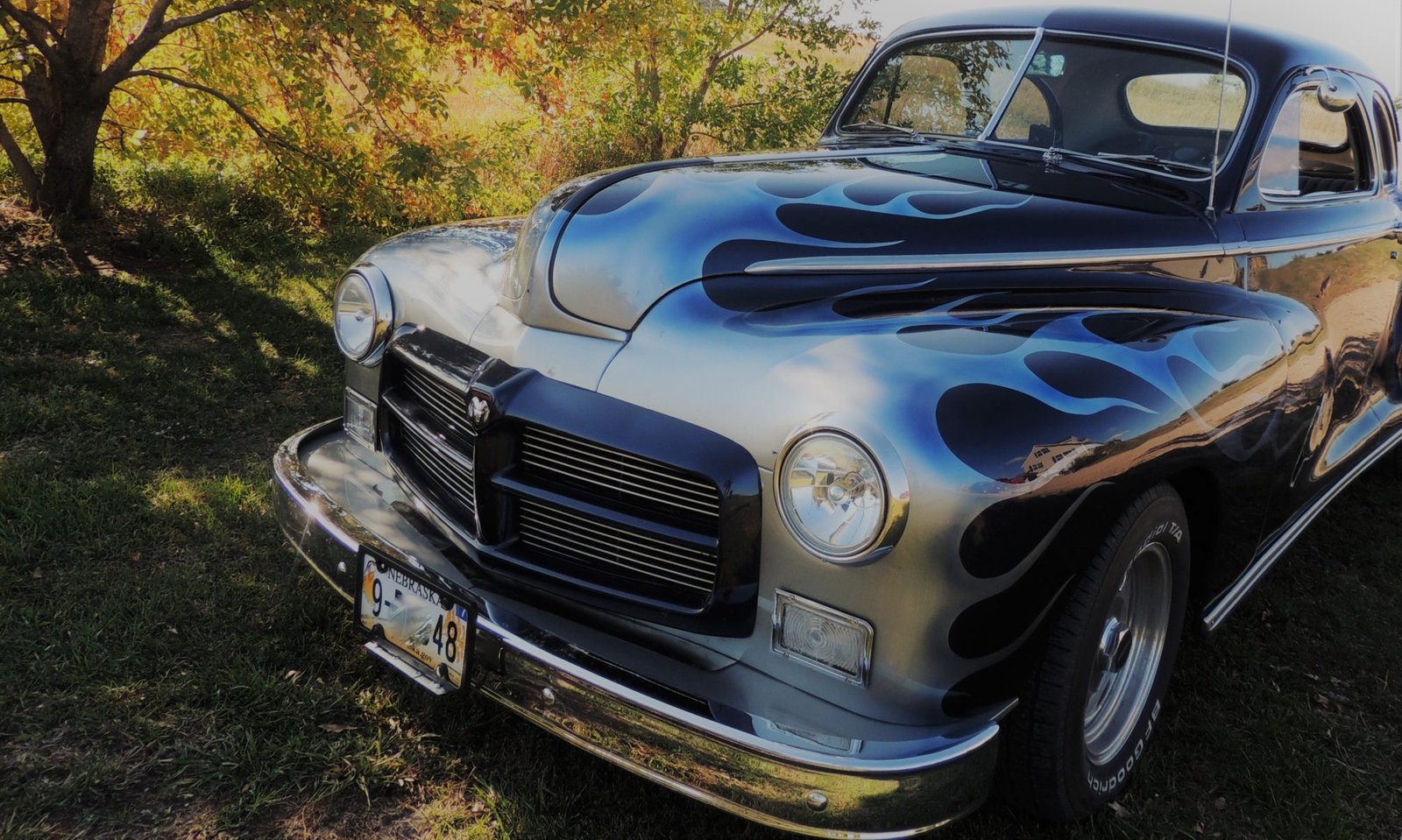When most people hear “Willys,” they understandably think of jeeps, but Willys first manufactured passenger cars. In fact, during the early 1900s, Willys was second only to Ford in production of automobiles. In the midst of the roaring twenties, Willys produced over 200,000 units in 1925 alone. Willys encountered financial problems during the depression but was saved by World War II’s demand for jeeps. After the war, the company, led by Ward Canaday, again wanted to try its hand at passenger cars and finally achieved this goal with the Aero in 1952.

The Willys Aero is a great-looking car with small fins and elements of airplane design like a cockpit-style dash and split windshield, aerodynamic lines and this airplane hood ornament:

Below the hood ornament there is a large “W” embedded in the grille:

The car featured a uni-body construction with a low center of gravity and a 108” wheel base. Considered a light car at 2562 pounds, it weighed hundreds of pounds less than a Ford or Chevy. It would also run 500 miles on one 18-gallon tank of gas! The car didn’t sacrifice power, however, with a 90 hp Hurricane 6 F-head engine under the hood. In January, 1952, Popular Science Monthly featured “The Story of the New Aero Willys,” and asserted that “Its six-cylinder engine develops more horsepower per cubic inch of piston displacement than that of any other U.S. car, regardless of price.” The magazine further extolled the virtues of the Aero by saying that it cruised beautifully at 75 mph and that both the engine and transmission demonstrated “excellent smoothness.”
In 1952, the Willys was available in the Aero-Lark, the Aero-Wing and the Aero-Ace. In 1953, the Aero-Wing was replaced by the Aero-Falcon and a hardtop coupe, the Aero-Eagle, was added to the line-up. When asked about the choice of the name “Aero,” Canaday replied that “it’s the nearest thing to flying you’ll find on the highway.”

The Aero was only manufactured for four years. Willys was purchased by Kaiser in 1953, and Henry Kaiser made the decision to focus on jeeps a couple of years later. It was another example of a car ahead of its time, and one more that’s being added to the list of cars I’d like to own!



Interesting article on the Aero!
Thank you for reading it!